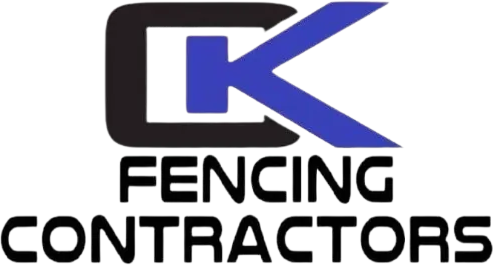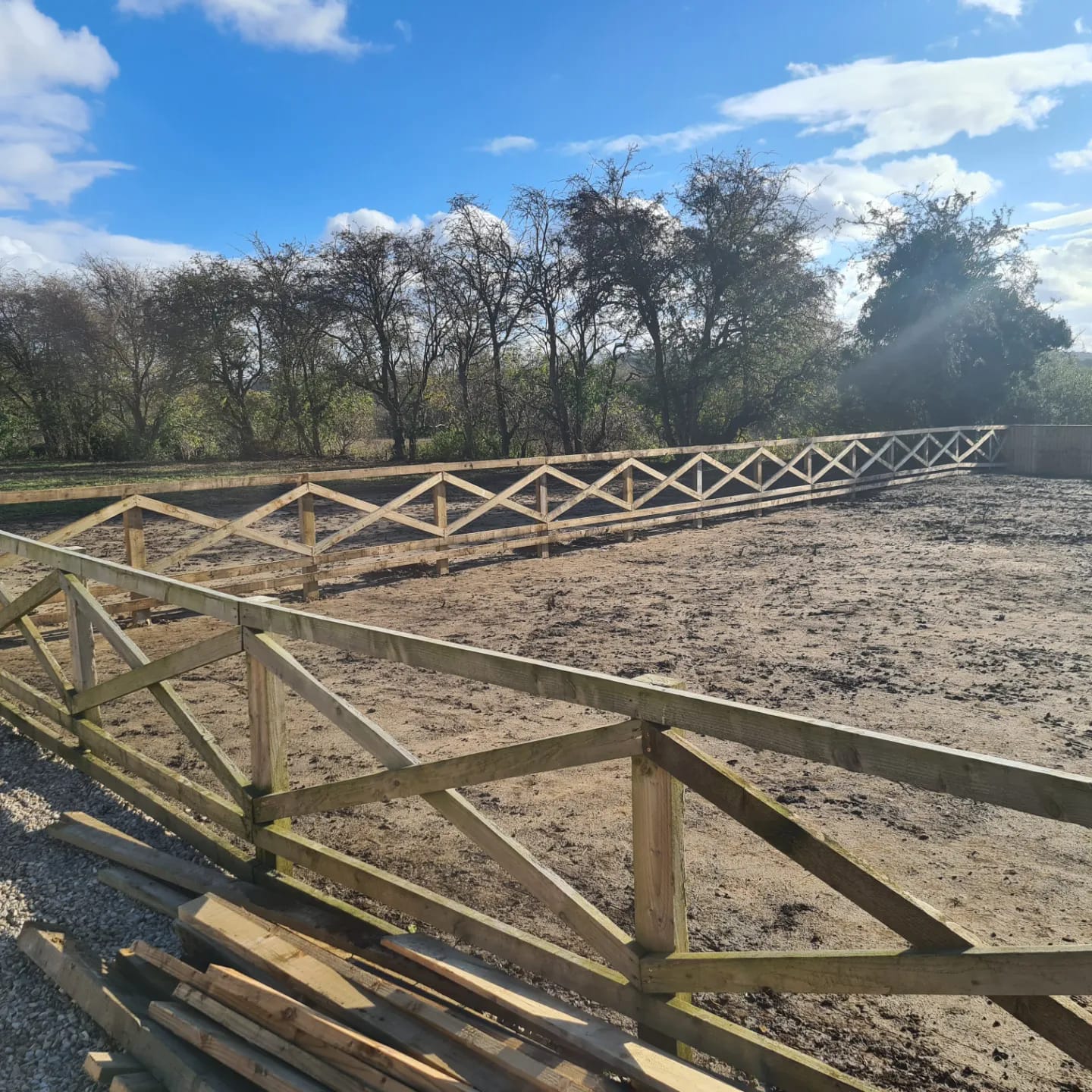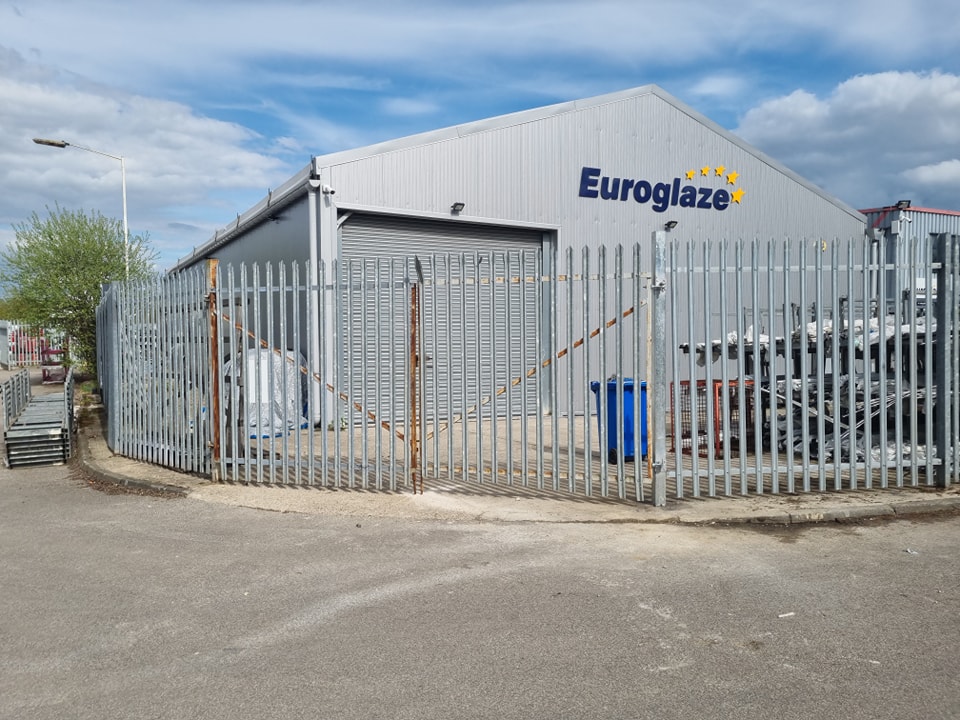Residential and commercial property owners need fencing that enhances aesthetics while delivering robust security. With evolving safety regulations and increased risks of theft and vandalism, selecting a fencing system with essential security features is crucial. This article outlines the most important security attributes found in modern fencing solutions. It covers how anti-climb designs, privacy features, advanced materials, and high-tech elements like access control systems and smart sensors work together to protect property. By considering design, regulatory compliance, and maintenance, property owners can make informed decisions that ensure a durable and secure perimeter.
What Are the Essential Security Features in Residential Fencing Solutions?
Residential fencing must combine robust construction with features that deter intruders and protect privacy. Secure installation using high-grade steel, composite materials, or treated wood improves resistance to forced entry. Key elements include: • Anti-climb designs with angled tops, curved surfaces, and secondary barriers that hinder scaling. • Integrated privacy features using opaque panels and landscaping to reduce external visual surveillance. • Enhanced protection at night using security lighting, sensors, and infrared components. Together, these features ensure a fence not only meets aesthetic and regulatory requirements but also serves as an effective deterrent to intrusions.
How Do Anti-Climb Designs Enhance Residential Fence Security?
Anti-climb measures are vital for preventing intruder access. Designs incorporating overhanging tops, spiked projections, and angled surfaces disrupt climbing attempts. Even slight modifications, like adding an extra 10° on top, can reduce intrusions significantly. These features work through: • Physical barriers that force intruders into more difficult, exposed positions. • Visual deterrence by making the fence appear too challenging to scale. Both metal fences adapted with razor wire and wooden fences with reinforced lattice details contribute to a secure and intimidating barrier.
Why Is Privacy Important in Security Fencing for Homes?
Privacy is a core component of residential fencing. A privacy fence limits external views into a property, reducing the risk of targeted burglaries by concealing interior layouts and valuables. Key benefits include: • Decreased risk of break-ins as intruders have less information about a home’s vulnerabilities. • Enhanced personal space and neighborhood security. Materials such as solid wood panels or composite screens, paired with strategic landscaping, help create an environment that is both visually appealing and secure.
What Materials Provide the Best Durability and Protection for Residential Fences?
Choosing durable materials is critical to both security and longevity. High-durability options include: • Steel or aluminum for superior strength and resistance to forced entry. • Engineered composites and treated wood that balance aesthetic appeal with resilience. For example, galvanized steel resists corrosion in humid climates and, when combined with UV-resistant coatings, retains its appearance and structural integrity over time. Investing in premium materials minimizes maintenance costs while providing powerful protection.
Which Security Features Are Critical for Commercial and Industrial Fencing?
Commercial and industrial properties have larger perimeters and higher stakes, requiring even more rigorous security measures. Essential features include: • Anti-climb fences paired with razor wire or spiked barriers to prevent scaling. • Security gates integrated with biometric or RFID access systems. • Thick materials like steel mesh or welded wire that offer high impact resistance. These systems often work in layers, so even if an intruder overcomes one barrier, subsequent features further reduce the risk of breach. Real-time surveillance and automated barrier systems also contribute to overall operational efficiency and safety compliance.
How Do Anti-Climb Fences and Razor Wire Improve Business Perimeter Security?
For commercial settings, anti-climb fences combined with razor wire create an imposing deterrent. The overlapping mesh and pointed razor wire transform a standard barrier into a multi-layered defense system that: • Reduces unauthorized access by up to 40% through its physical complexity. • Provides redundancy; if one layer is bypassed, additional barriers remain. This combination minimizes potential breaches and supports compliance with industry-standard security protocols.
What Role Do Security Gates and Access Control Systems Play in Commercial Fencing?
Security gates and access control systems are the first line of defense in commercial fencing. These systems use: • Biometric scanners, RFID devices, and keypad access to ensure only authorized personnel can enter. • Integration with centralized monitoring platforms that log every entry and support rapid response. By automating access control, businesses reduce the need for constant human oversight, lowering the risk of errors and streamlining the overall security process.
How Can Surveillance Integration Strengthen Commercial Fence Security?
Surveillance integration enhances security by continuously monitoring the fence perimeter. CCTV cameras and motion detectors: • Provide real-time alerts for unusual activities. • Use infrared and night vision to maintain vigilance in low-light conditions. This interconnected system not only deters intruders but also delivers actionable intelligence to improve future security measures.
How Does Custom Design and Professional Installation Impact Fence Security?
Custom design and professional installation are key to ensuring a fence meets specific security needs. A custom-designed fence: • Can be tailored to the property’s terrain and vulnerabilities. • Allows integration of advanced features such as anti-climb measures and reinforced gate systems. Meanwhile, professional installation guarantees adherence to strict standards, preventing common issues like weak joints or misaligned posts that might compromise security. Together, these factors ensure long-term effectiveness and cost efficiency.
Why Is Expert Security Consultation Vital for Choosing the Right Fence?
Expert consultation allows property owners to assess vulnerabilities and regulatory requirements accurately. Security professionals: • Recommend tailored solutions that blend aesthetics and protection. • Help integrate advanced technologies to secure the perimeter. On-site evaluations further ensure that potential weakness areas are addressed before installation, reducing future security risks and repair costs.
What Are the Benefits of Custom-Designed Fencing Solutions?
Custom-designed fences offer flexibility in material choice, design, and technology integration. Benefits include: • Matching the fence to specific operational and regulatory needs. • Reducing maintenance costs through optimized design. • Enhancing visual appeal without compromising security. Backed by warranties and professional guarantees, these solutions provide a high return on investment while addressing all potential vulnerabilities.
How Does Professional Installation Ensure Maximum Fence Effectiveness?
Professional installation is crucial as it ensures: • Precise alignment and secure fastening of all components. • Compliance with safety and regulatory standards. Trained installers reduce errors that could lead to vulnerabilities, thus maximizing the fence’s long-term performance and reliability.
What Maintenance and Repair Features Keep Fencing Solutions Secure Over Time?
Ongoing maintenance and timely repairs are essential for long-lasting security. Routine inspections help detect issues such as rust, cracks, or loose fittings before they become serious. Key practices include: • Regular cleaning and protective coatings to prevent corrosion. • Prompt replacement or repair of damaged panels or posts. An effective maintenance plan minimizes downtime, reduces major repair costs, and keeps all integrated systems—such as access control and surveillance—in optimal condition.
How Does Regular Maintenance Prevent Security Vulnerabilities?
Regular maintenance is critical to catching and fixing minor issues before they escalate. By inspecting for surface corrosion, deteriorating anti-climb measures, and loose hardware, property owners can: • Prevent up to 30% more security breaches compared to sporadic inspections. • Extend the lifespan of the fence by maintaining its original protective features. Routine upkeep is especially vital in high-security environments to ensure continuous defensive capability.
What Are Common Repair Needs for High-Security Fences?
Even high-security fences require repair over time. Common needs include: • Replacing damaged panels and fixing bent or corroded posts. • Reattaching anti-climb features and addressing sensor malfunctions. Regular monitoring and prompt repairs prevent small defects from compromising the entire security system, ensuring the fence remains effective in deterring intruders.
How Can Ongoing Service Contracts Enhance Fence Longevity and Protection?
Service contracts with reputable fencing companies ensure continuous performance through: • Scheduled maintenance visits and emergency repair services. • Regular updates to integrated security systems. These contracts provide peace of mind by addressing minor issues before they develop into major vulnerabilities, ultimately extending the lifespan of the fence and reducing overall maintenance costs.
What Advanced Security Technologies Are Integrated Into Modern Fencing Solutions?
Modern fencing systems now incorporate advanced security technologies that transform a passive barrier into a proactive defense. Key technological integrations include: • Smart access control systems that use biometric and RFID technologies. • Sensor-based surveillance, including motion detectors and infrared cameras. • Remote monitoring systems that allow real-time response via centralized hubs. This integration enables automated responses—such as triggering alarms or activating additional lighting—ensuring the fence continuously adapts to potential threats.
How Do Access Control Systems Work With Fencing for Enhanced Security?
Access control systems work seamlessly with physical fencing to manage entry. By using biometric scanners, RFID cards, and keypad entry integrated into security gates, these systems: • Ensure only authorized personnel can access the property. • Log every access event for later review. This cohesive system greatly reduces the risk of unauthorized entry, forming a smart security zone around the perimeter.
What Are the Benefits of Surveillance and Sensor Integration in Fencing?
Integrating surveillance cameras and sensors directly into fencing significantly bolsters security by: • Providing round-the-clock monitoring with immediate alerts for unusual activity. • Enabling detailed post-incident analyses through recorded data. The combination of these technologies creates a responsive system that not only deters intrusions but also helps fine-tune future security strategies.
How Does Smart Fence Technology Improve Perimeter Protection?
Smart fence technology upgrades conventional barriers by using: • Real-time alerts via mobile apps. • Automated lock-down mechanisms and remote monitoring. With sensors continuously assessing fence integrity, any signs of tampering or forced entry trigger immediate responses. In high-risk environments, this results in a highly efficient and interconnected security network that reinforces overall perimeter protection.
How Do Specialized Fencing Solutions Address Unique Security Needs?
Different applications require tailored fencing solutions that address unique challenges. Whether for construction sites, agricultural lands, sports fields, or critical infrastructure, specialized fencing is designed to meet specific needs: • Agricultural fences secure livestock and equipment while deterring intruders. • Sports field fences balance clear visibility with robust protection. • Temporary fencing for construction sites is robust yet easily reconfigurable. Customized options for critical infrastructure often involve ultra-durable materials, advanced sensor networks, and integrated surveillance for effective protection.
What Security Features Are Important for Agricultural and Sports Field Fencing?
For agricultural and sports field settings, fencing must: • Deter unauthorized entry while allowing sufficient access for operations. • Utilize high-tensile wire or heavy-duty mesh for strength and anti-climb properties. • Incorporate transparent or reinforced panels to maintain visibility and safety. These tailored features ensure that fences not only protect the area but also adapt to the functional needs of each environment.
How Do Temporary Fencing Solutions Maintain Security on Construction Sites?
Temporary fencing on construction sites is designed to: • Be quickly installed and removed as site layouts change. • Use high-strength materials and added security features like alarms and motion detectors. • Adapt to evolving risks during different construction phases. This flexibility ensures continuous protection, compliance with safety regulations, and effective deterrence against theft or vandalism.
What Customizations Are Available for Critical Infrastructure Fencing?
Critical infrastructure demands bespoke fencing that prioritizes absolute security. Customizations typically include: • Ultra-durable materials such as high-tensile steel with corrosion-resistant coatings. • Multiple layers of security, including anti-climb features and razor wire. • Integration with advanced sensor networks and smart access control systems. These highly specialized options ensure that facilities like power plants or data centres remain secure under any conditions.
Why Are High-Quality Materials Crucial for Maximum Fence Security?
High-quality materials are foundational to effective fencing. They ensure that the structure is robust, durable, and capable of withstanding both environmental factors and attempted breaches. Premium-grade metals like galvanized steel, high-tensile aluminum, and advanced composite polymers provide: • Superior strength and resistance to forced entry. • Long-term stability with minimal maintenance. • Enhanced integration with advanced security features such as anti-corrosion coatings. Investing in quality materials not only improves immediate security but also delivers cost-effective, long-term performance.
Which Materials Offer the Best Resistance to Weather and Tampering?
Certain materials excel in resisting weather and tampering: • Galvanized steel resists rust and corrosion even in humid or coastal settings. • Powder-coated aluminum offers excellent UV and impact resistance. • Reinforced composites combine the natural look of wood with modern durability. These materials maintain their integrity over time and form the backbone of a secure fencing solution.
How Do Material Choices Affect Fence Longevity and Security Performance?
The materials chosen determine how long a fence will function effectively. High-quality, treated, and coated materials sustain: • Resistance to corrosion, UV damage, and physical impacts. • Reduced need for frequent repairs or replacements. By supporting the integration of advanced security features, premium material choices ensure that a fence remains a reliable defense over many years, offering both immediate and long-term protection.
Table: Summary of Key Attributes of High-Quality Fencing Materials
Before concluding this section, the following table compares common fencing materials based on durability, maintenance, security benefits, and cost.
| Material | Durability | Maintenance Needs | Security Benefit | Typical Cost |
|---|---|---|---|---|
| Galvanized Steel | Very High | Low | High resistance to forced entry | High |
| Powder-Coated Aluminum | High | Moderate | Resists corrosion and tampering | Moderate |
| Composite Polymers | High | Low | Excellent weather resistance | Moderate to High |
| Treated Wood | Moderate–High | High | Aesthetic appeal but requires upkeep | Low to Moderate |
| Reinforced Mesh | High | Low | Strong anti-climb properties | Moderate |
Each material offers different benefits, and the best choice depends on the specific security, maintenance, and cost requirements of the property.
What Advanced Security Technologies Are Integrated Into Modern Fencing Solutions?
Modern fencing systems increasingly rely on advanced technologies to enhance security. These systems integrate: • Electronic sensors and remote monitoring devices. • Smart access controls using biometric and RFID systems. • Surveillance cameras with infrared and thermal imaging capabilities. Such integrations transform traditional fences into dynamic security networks, enabling fast response, continuous monitoring, and real-time data analysis to stay ahead of potential threats.
Frequently Asked Questions
Q: What are the main advantages of custom-designed fencing solutions? A: They are tailored to specific property needs, ensuring optimal protection and aesthetics while reducing maintenance costs and complying with regulations.
Q: How frequently should residential fences be maintained to ensure maximum security? A: Routine inspections twice a year with annual professional maintenance help detect wear and prevent vulnerabilities.
Q: What types of access control systems are most effective when integrated with commercial fencing? A: Systems using biometric scanners, RFID-based entry, and keypad access are effective, especially when integrated with automated gates and central monitoring.
Q: Are smart fences more expensive than traditional fencing solutions? A: They have a higher initial cost due to advanced technology, but lower long-term maintenance and a reduced risk of breaches offer better overall value.
Q: Can temporary fencing provide the same level of security as permanent installations? A: Temporary fencing is designed for short-term, robust protection on construction sites or events, though it may not have the same lifespan as permanent systems.
Q: How does the use of high-quality materials impact the overall lifespan of a fence? A: Premium materials provide superior durability and resistance to environmental factors, lowering maintenance needs and extending the fence’s effective lifespan.
Q: What maintenance tasks are critical for keeping a high-security fence effective over time? A: Regular inspections for corrosion and structural damage, tightening loose fittings, cleaning to remove debris, and timely updates to security systems are crucial.
Final Thoughts
Selecting the right fencing solution involves a balance of design, materials, and technology. Implementing features such as anti-climb elements, integrated privacy, and advanced surveillance ensures a strong perimeter that meets modern security demands. Custom designs, professional installation, and ongoing maintenance further guarantee long-term protection and cost efficiency. Ultimately, high-quality and well-integrated fencing offers property owners both peace of mind and regulatory compliance, making it a wise investment in safeguarding assets.




